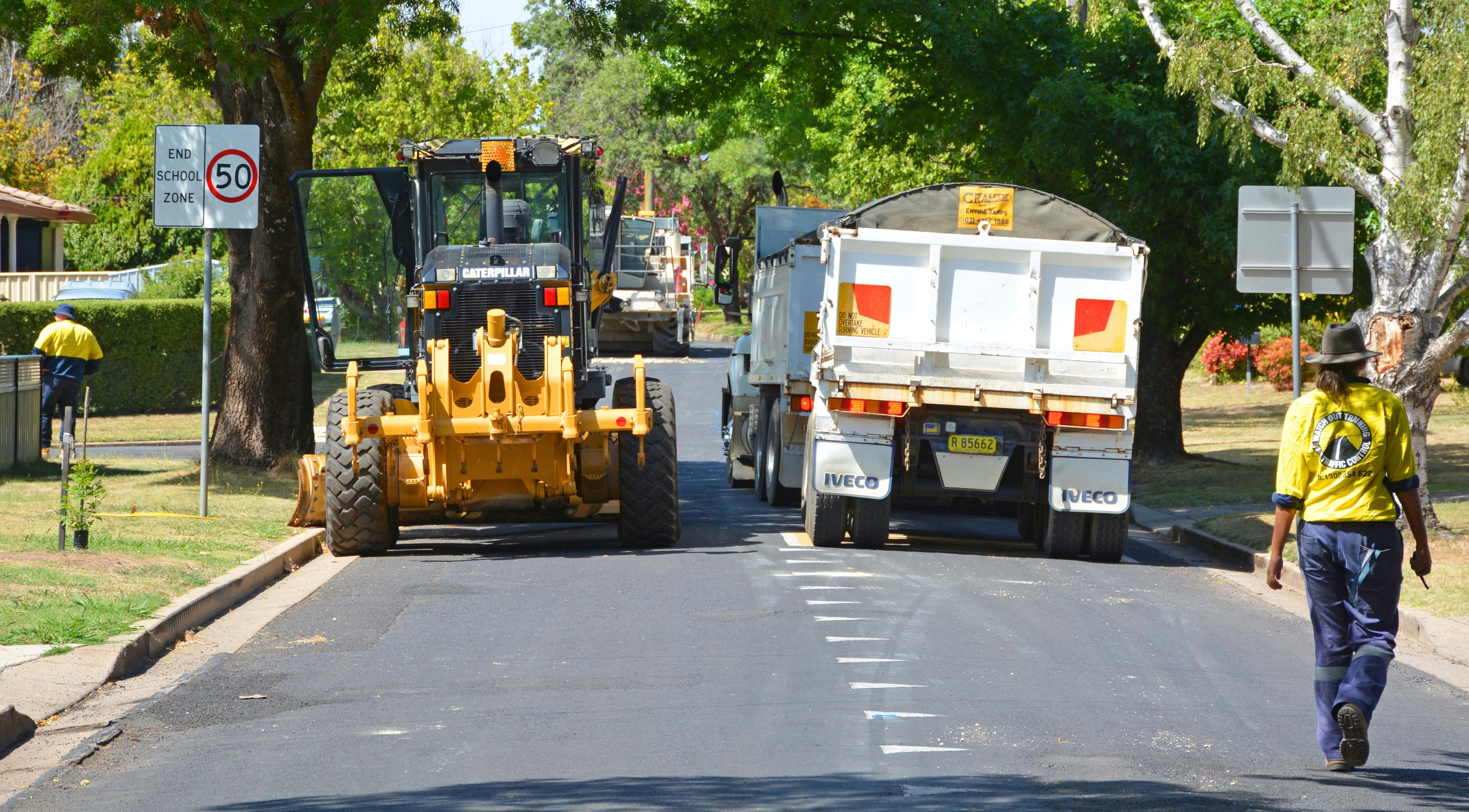Looking after new roads:

Orange City Council is working its way through $15 million of road upgrades and has completed more than 20 sections of road since October.
Some of these roads were resealed with two-coats of a bitumen-gravel seal and it’s probable, and normal, that during consistently hot temperatures, (like the heat-wave conditions Orange is experiencing this week) the surface will look like it is 'melting' in small patches.
EXPLAINING ROAD-BUILDING :
How does this happen?
When a new bitumen-gravel surface is added to a road, liquid bitumen is sprayed onto the road, followed by a layer of fine gravel. That process is then repeated with the spraying of more liquid bitumen then another layer of gravel.
This surface, especially the bitumen will continue to 'cure' for a number of months. During this time, if there are prolonged periods of very high temperatures, a process known as 'bleeding' can occur. This is where the bitumen gets hot enough for the gravel to sink or be pushed to bottom of the layers by passing traffic.
This leaves only the softer bitumen at the top of the road surface. This softer surface is more vulnerable to be damaged by heavy trucks or sharply turning tyres.
These patches of soft 'tar' could be damaged by large vehicles, tow bars, sharp turns or high volumes of traffic so it’s important the council road crews can get to these sections and cool them down or take action before any damage is done.
Council staff will make routine follow-up checks to look at the condition of new road surfaces. Where needed the council's jet-patcher crew will add spray fine gravel into the patches where 'bleeding' is occuring.
A visit by a water tank or a scattering of fine gravel applied quickly can prevent damage to the seal, so the council's road crews are also asking the community to be the council’s eyes and ears.
If you live near a newly re-surfaced section of road, keep an eye out for patches of bitumen that appear much darker than the surrounding road, where the patches appear to be wet and generally look like they’re melting.
Please give the customer service team a call on 63938000 so we can get a maintenance team to the scene as soon as practical.

MELTING: Here's an example of what a new road might look like when hot bitumen appears to melt.
Consultation has concluded



